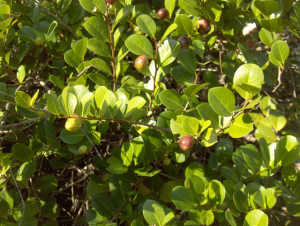How to Successfully Grow Coco Plums

Coco plums are one of nature’s wonders, this plant can be grown and maintained either as a hedge which is formal or informal letting it take off and grow, or even as a tree.
Coco plums is a native of Florida, the Caribbean of which I am a part and also Latin America. Coco plums are very delicious and have a sweet taste.
The international airport where I am employed grows these plums throughout its landscape and gardens which I oversee. When the season comes to harvest many of the airport’s staff can be seen walking about in the parking lots and garden areas picking and feasting upon these plums.
Coco plums hardiness
What makes this plant so amazing is the many purposes they serve. Besides being grown for their fruits and use as a hedge, coco plums can be found growing along beaches and coastal areas because of their ability to withstand the salt sprays and high winds.
Some species of coco plums have red tips on the leaves which can be a show stopper if plants are properly maintained. The fruits of coco plums are either light yellow-whiteish or dark purple.
Growing coco plums
1. Choose a location that gets 6-8 hours of sunlight.
2. Use organic or good garden soil. A soil ph of 6.6-6.4 is ideal.
3. The planting hole should be large enough so the root ball can slide in easily, in other words, the planting hole should be two times the width of the root ball.
4. Though coco plums are considered to be drought-tolerant it is good to keep the soil somewhat moist, not waterlogged or extremely wet.
5. The use of organic fertilizers work wonders.
Transplanting coco plum
From my experience of transplanting coco plums, these plants in some instants can have a hard time bouncing back once transplanted. Care should be taken during transplanting procedures.
Make sure that most of the roots remain attached to your plant, dig a hole wide enough so roots sit comfortably, and use and organic soil or good garden soil.
Remove about a third of the top growth so your plant can establish faster and keep the soil somewhat moist, don’t allow the soil to dry out completely, and in no time, your plant will be established.
Coco plums pests
The main pest problem that I have come across is whiteflies which can also cause the onset of sooty mold. Treating with insecticidal soap sprays or organic insecticides has proven to be beneficial.
Coca plum jelly
Coca plum jelly makes a good treat, here is how it is done. In a medium-size pot add 1 1/2 cup of coco plums, add 1 pound of brown sugar then fill the pot with water till the water covers coco plums next turn on the stove.
Bring coco plums to a boil and turn down the heat, after 2 1/2 to 3 hours remove from the heat and add some cinnamon. The end result is this mixture should form a light brown jelly.
Enjoy!
The final word
Coco plums are great to have as a part of your garden feature so install some of these plants and reap the benefits they have to offer as they serve you in so many ways.
About the author
Norman loves being in the garden, both at home and for his job....
he is 'Natures Little helper' being outdoors, growing his vegetables and flowers from an early age.
Now having spent over 22 years in the profession he want to give some of his knowledge to others...
his vast array of hints and tips you will find scattered over this site will help you no end growing plants in your garden.
